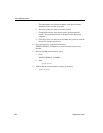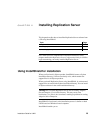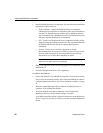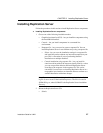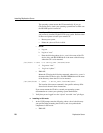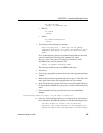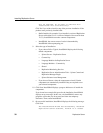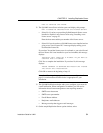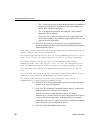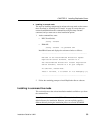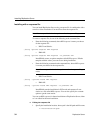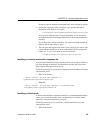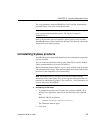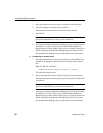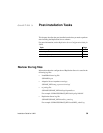
Installing Replication Server
32 Replication Server
• Yes – to configure and start a sample Replication Server. InstallShield
displays the configuration information for the sample Replication
Server. Write this information down.
• No – to complete the installation and configure a fully-featured
Replication Server manually.
If you select No, you can configure and start a sample Replication
Server after installation. See “Start the sample Replication Server” on
page 40 for more information.
15 Click Next. If you chose to configure and start a sample Replication
Server, InstallShield displays the configuration information related to the
sample Replication Server:
This page contains detailed information regarding the sample Replication
Server. Please record this information.
The sample Replication Server will be called SAMPLE_RS and will run on
port 11752. It will be configured with a user of sa and no password.
The sample Replication Server will use an embedded RSSD called
SAMPLE_RS_ERSSD that runs on port 11751. It will be configured with a
user of SAMPLE_RS_RSSD_prim and a password of SAMPLE_RS_RSSD_prim_ps.
The installer has updated the appropriate interfaces file or sql.ini
file.
All files and logs associated with the sample Replication Server will be
located in the directory $SYBASE/REP-15_0/samp_repserver.
The sample Replication Server will be configured using the file
$SYBASE/REP-15_0/samp_repserver/SAMPLE_RS.res.
16 Click Next. The Configure New Replication Server window displays the
progress of the server configuration.
17 Click Next. The Installation Completed window appears, verifying that
the Replication Server software is now installed.
If you chose to start a sample Replication Server, it is started
automatically. If you did not choose to start a sample Replication Server,
you must configure and then start your Replication Server manually.
See the Replication Server Configuration Guide for UNIX for information
about configuring your new Replication Server.
18 Click Finish. The InstallShield wizard closes.



